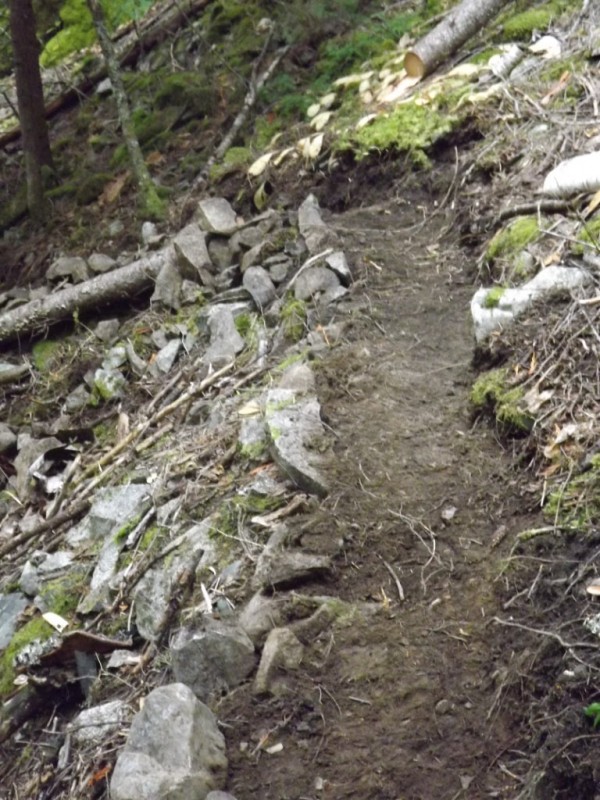I began working on a connecting trail from our property to the linear park below almost three years ago. I hacked in a goat-path of sorts: narrow and full of switchbacks. It changed my life, in that it made one of my favourite running trails a mere 3-minute scrabble from my door.

But it wasn’t a great trail, technically speaking. Parts had a grade of more than 15%, it was narrow, there were a couple of places that were subject to erosion and the tight switchbacks meant that you couldn’t ride a mountain bike on it.
Last summer I did an IMBA trail-building workshop and learned more about how to lay out ride-able, sustainable trails. Armed with this knowledge and my new McLeod rake, I set out to improve my trail. I laid out a new route at the top, eliminating three of the most problematic tight turns. I’ve spent the past couple of weeks working on that portion, about 75 metres in length.
Now I’m dealing with one of the three remaining switchbacks that can’t be edited out. Ideally it should be a loopy turn with a loop diameter of about 25 feet. The problem, of course, is how one creates a relatively level 7-metre-wide platter of earth on the side of a mountain with a grade of 30-40 degrees, made of clay, roots and rock, with nothing more than a mattock and my trusty fire rake. I’m figuring high-speed flowy bike turns will have to be compromised in the name of preserving my sanity. I’m shooting for a 4-metre radius, something that will require and even that is going to require a herculean effort. I think I’ll be able to snake my way through that at lower speed without falling over. I’m about a quarter of the way through my first such turn, and have spent probably 10 hours at it. So … yeah … this trail may end up being a lifetime’s work.
Still, I am having fun riding my bike up and down the piddly first 150 metres.



























